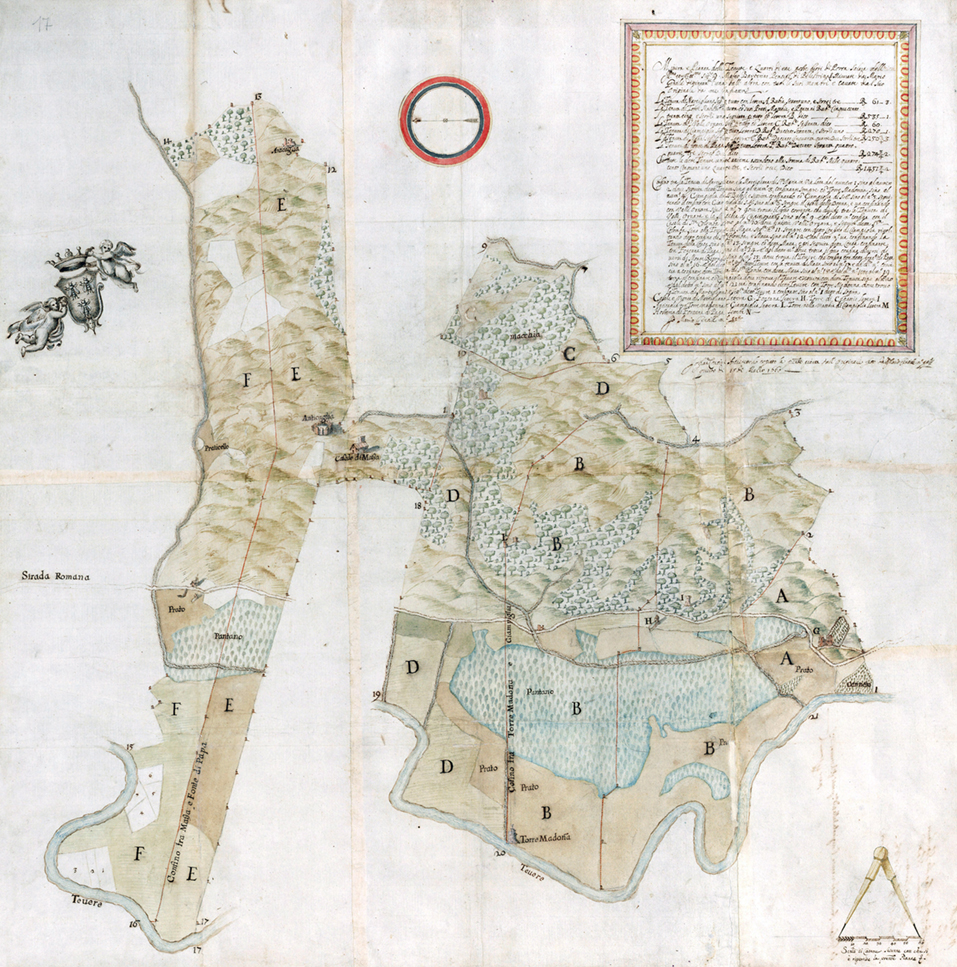Romulus, having attended to these matters, led out his army against the Crustumerians, who were better prepared than the armies of the other cities had been. And after he had reduced them both in a pitched battle and in an assault upon their city, although they had shown great bravery in the struggle, he did not think fit to punish them any further, but made this city a Roman colony.
Dionysius of Halicarnassus, Roman Antiquities
Introduction
The remains of the settlement of Crustumerium lie ca. 15 km to the north-northeast of Rome on a complex of hills near the Tiber River and the Via Salaria, one of the oldest roads leading to Rome (see map).
The settlement of Crustumerium emerged around 850 BC. The nearby Tiber functioned as a natural border of the settlement’s territory and as a means of contact with nearby Fidenae and Rome as well as the Sabine towns upstream. Crustumerium developed into a prosperous town over the next centuries until its life was seemingly cut short abruptly early in the Republican period, probably around 500 BC.
Despite its mention in historical sources, its location was lost until the 1970s when it was rediscovered. Since then, Crustumerium and its surroundings have been the subject of archaeological study. In 1997, the settlement and surrounding burial grounds were incorporated in the Riserva Naturale Marcigliana and the site itself protected by Italian heritage law, which has meant that the area has escaped the devastating effects of modern urbanization.

▲ Map of the area north of Rome, with the main
settlements and roads between ca. 850 and 500 BC.

▲ Map of Central Italy, showing the main settlements between ca. 850 and 500 BC, and the main peoples inhabiting the area.
Crustumerium and the literary sources
We have no contemporary literary references to Crustumerium; all our information comes from Roman authors writing many centuries after the settlement had already been abandoned. Regardless, references to the settlement are scarce, which has been taken as an indication that Crustumerium’s fate was so bound up with Rome that it had no time to be identified by means of an independent history.
The early origins of Crustumerium are reflected in the ambiguous references to the town’s foundations and it having a place in early Roman legends and stories. According to Diodorus Siculus, the city was founded by Silvius, the mythical king of Alba Longa, together with other Latin cities such as Satricum, Gabii, and Tibur. Dionysius of Halicarnassus attributes a similar Alban origin to the city, saying that it was founded in an equally remote past (“many years before the founding of Rome”), together with Fidenae and Nomentum.
The city was almost universally considered as a Latin town, except by Plutarch, who refers to Crustumerium as Sabine, although he did so for Antemnae – just 5 km north of Rome – as well and was obviously mistaken.
Crustumerium and Rome
Crustumerium appears in the famous legend of the abduction of the Sabine women alongside Caenina and Antemnae, taking up arms against Rome but being defeated with ease, after which the town was taken, its territory divided among Roman citizens, and part of Crustumerium’s inhabitants were forced to move to Rome. Nevertheless, the city is taken again during the reign of Tarquinius Priscus (king between 616 and 578 BC), once again with little opposition as the Crustumini opened their city gates without resisting, allowing the Roman army to enter. Roman settlers were left in the city to prevent a future uprising. Nonetheless, Crustumerium is taken for the third and last time in 499 BC. The year 499 BC traditionally marks the definitive Roman conquest of the city of Crustumerium. The area around Crustumerium subsequently suffered from Sabine attacks, although no explicit references are made to the city itself. The last reference to the city is made in relation to the events of 449 BC when a Roman army commanded by retreated to Crustumerium.

▲ ‘The Abduction of the Sabine Women’, by Nicolas Poussin, 1634–1635 (Metropolitan Museum of Art).
The Abduction of the Sabine Women
According to the Roman historian Livy, the abduction of the Sabine women occurred in the early history of Rome shortly after its founding in the middle of the eighth century BC. It is said that after the foundation of Rome, the population consisted solely of Latins and other Italic peoples, in particular male bandits. With Rome growing at such a steady rate in comparison to its neighbors, Romulus became concerned with maintaining the city’s strength. His main concern was that with few women inhabitants, there would be no chance of sustaining the city’s population.
The Romans set out into the surrounding regions in search of wives to establish families with, but negotiations were unsuccessfull. Consequently, the Romans devised a plan. They planned and announced a festival of games to attract people from all the nearby towns. According to Livy, many people from Rome’s neighboring towns – including Crustumini – attended the festival along with the Sabines. At the festival, Romulus gave a signal by at which the Romans grabbed the Sabine women and fought off the Sabine men. The indignant abductees were soon implored by Romulus to accept the Roman men as their new husbands.
The Search for Crustumerium
Although the formal ‘discovery’ of Crustumerium did not occur until the early 1970s, various scholars have tried to locate the settlement from at least the 15th century onward, usually guided by historical sources in their search for the lost town. Unfortunately, none of the ancient authors gives a clear description of its location, since all vestiges of the city had already disappeared completely at the time of their writings.
In these early times, few scholars seem to have combined their study of the literary sources with proper topographic visits. A noteworthy exception is Philipp Clüver, who, according to his eulogy, crossed the entirety of Italy by foot during the early 17th century. In 1624, Clüver rightly located Crustumerium, although the lack of physical proof meant that his identification did not become widely known.
The uncertainty about the location of the site is seen in old maps, in which Crustumerium’s location often changes or is only approximately given. Many scholars must have unknowingly visited Crustumerium in their search, but the absence of remains at the surface kept the site hidden for centuries.
Between 1974 and 1976, L. Quilici and S. Quilici Gigli performed several archaeological surveys in the area of Crustumerium. Their observations, which would prove to be of great value for later explorations of the site, finally confirmed the location of Crustumerium on the Marcigliana Vecchia hill, only 15 km from the centre of Rome.
▲ Two maps by Heinrich Kiepert (1869 and 1900), showing how the location of Crustumerium shifts several kilometers.



